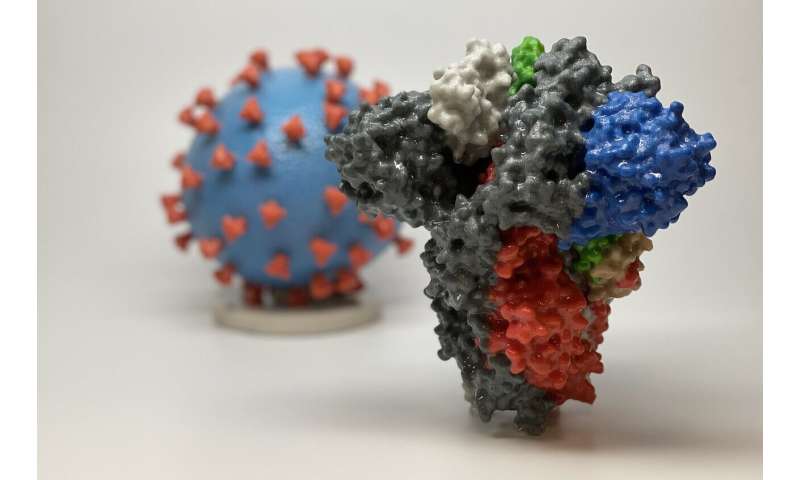
Researchers have shown that a variation in the viral genome of COVID-19 improved its ability to infect human cells and helped it become the dominant strain circulating around the world today.
The study, published today in the journal Cell, shows the variation is more infectious in cell cultures under laboratory conditions. The variant, named ‘D614G’, makes a small but effective change in the ‘spike’ glycoprotein that protrudes from the surface of the virus, which it uses to enter and infect human cells.
The D614G variant of COVID-19 quickly took over as the dominant strain soon after it first appeared, with geographic samples showing a significant shift in viral population from the original, to the new strain of the virus.
Researchers from the Los Alamos National Laboratory in New Mexico and Duke University in North Carolina, partnered with the University of Sheffield’s COVID-19 Genomics UK research group to analyse genome samples published on GISAID, an international resource for sharing genome sequences among researchers worldwide.
Dr. Thushan de Silva, Senior Clinical Lecturer in Infectious Diseases at the University of Sheffield, led analysis of data from Sheffield. He said: “We have been sequencing SARS-CoV-2 strains in Sheffield since early in the pandemic and this allowed us to partner with our collaborators to show this mutation had become dominant in circulating strains. The full peer-reviewed study published today confirms this, and also that the new D614G genome mutation variant is also more infectious under laboratory conditions.
“Data provided by our team in Sheffield suggested that the new strain was associated with higher viral loads in the upper respiratory tract of patients with COVID-19, meaning the virus’s ability to infect people could be increased.
“Fortunately at this stage, it does not seem that viruses with D614G cause more severe disease.”
Dr. Bette Korber, from the Los Alamos National Laboratory in New Mexico, was the lead author of the study. She said: “It is possible to track SARS-CoV-2 (COVID-19) evolution globally because researchers worldwide are rapidly making their viral sequence data available through the GISAID viral sequence database. Currently tens of thousands of sequences are available through this project, and this enabled us to identify the emergence of a variant that has rapidly become the globally dominant form.”
New supporting experiments, more extensive sequencing and clinical data, and improved statistical models have been published today in full at Cell, however the researchers are keen to stress that further laboratory analysis in live cells needs to be done to determine the full implications of the mutation.
Source: Read Full Article
